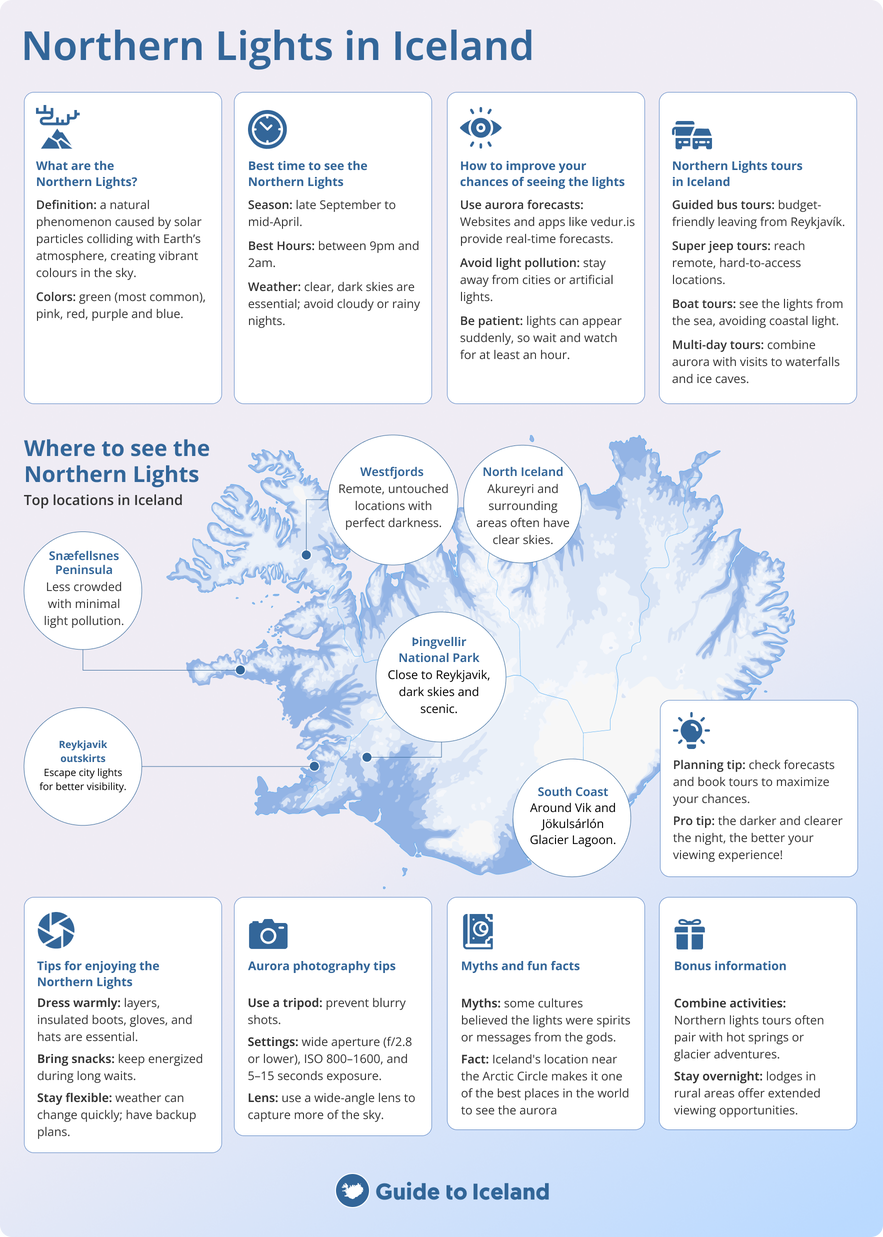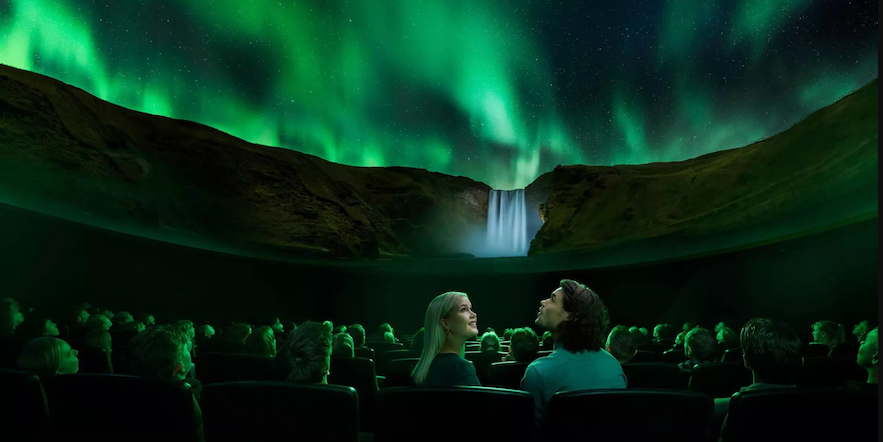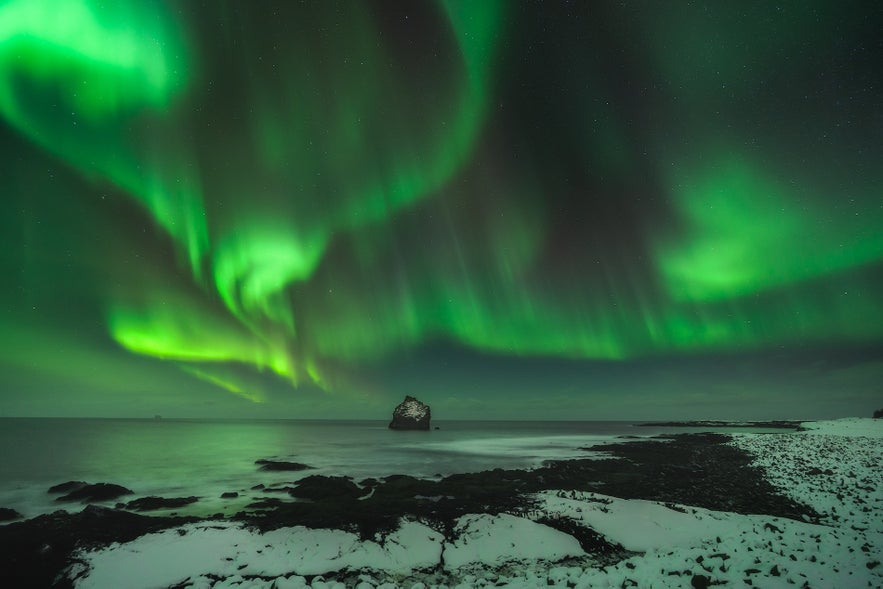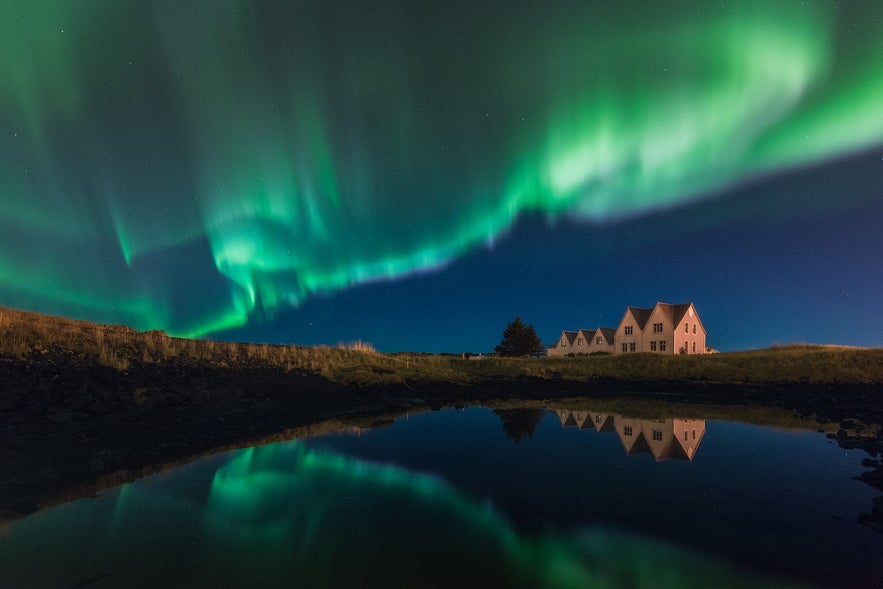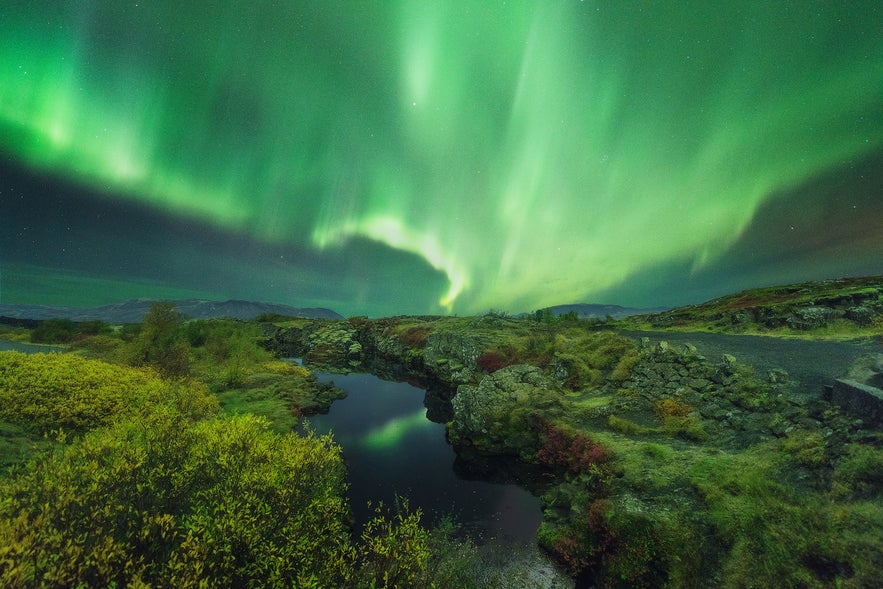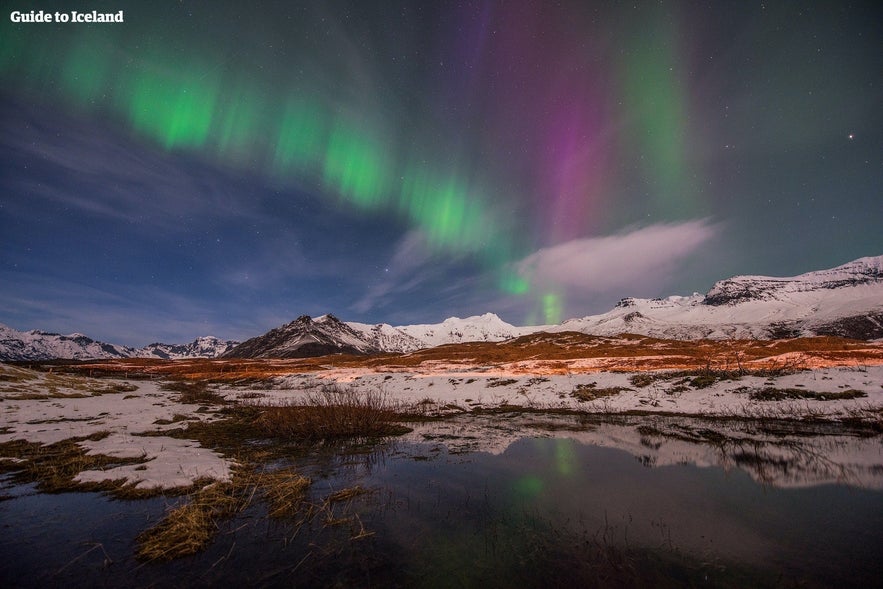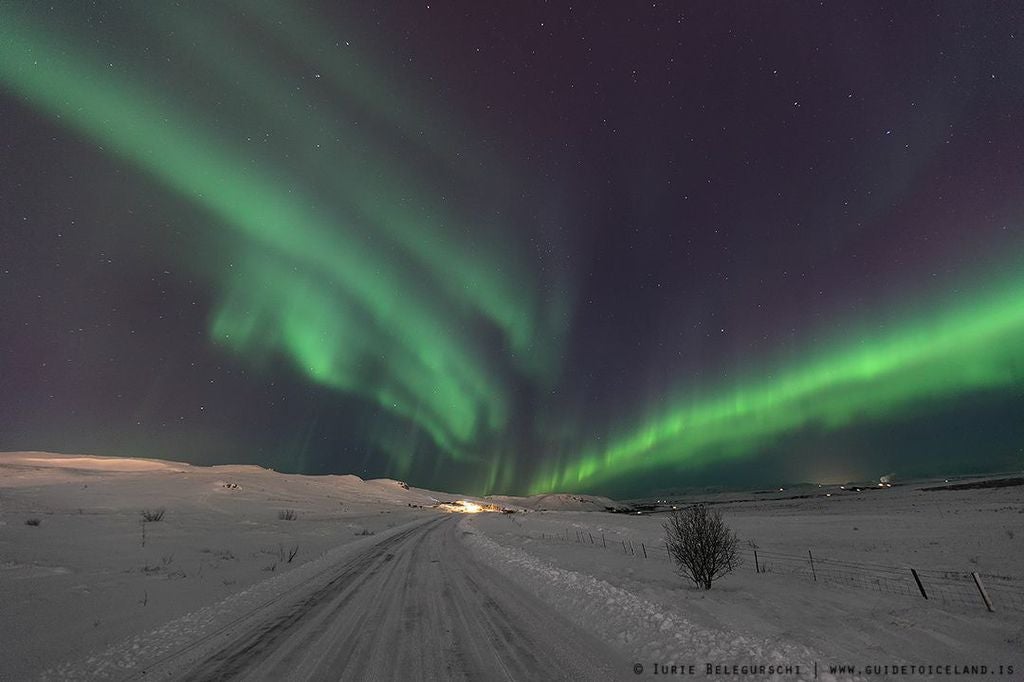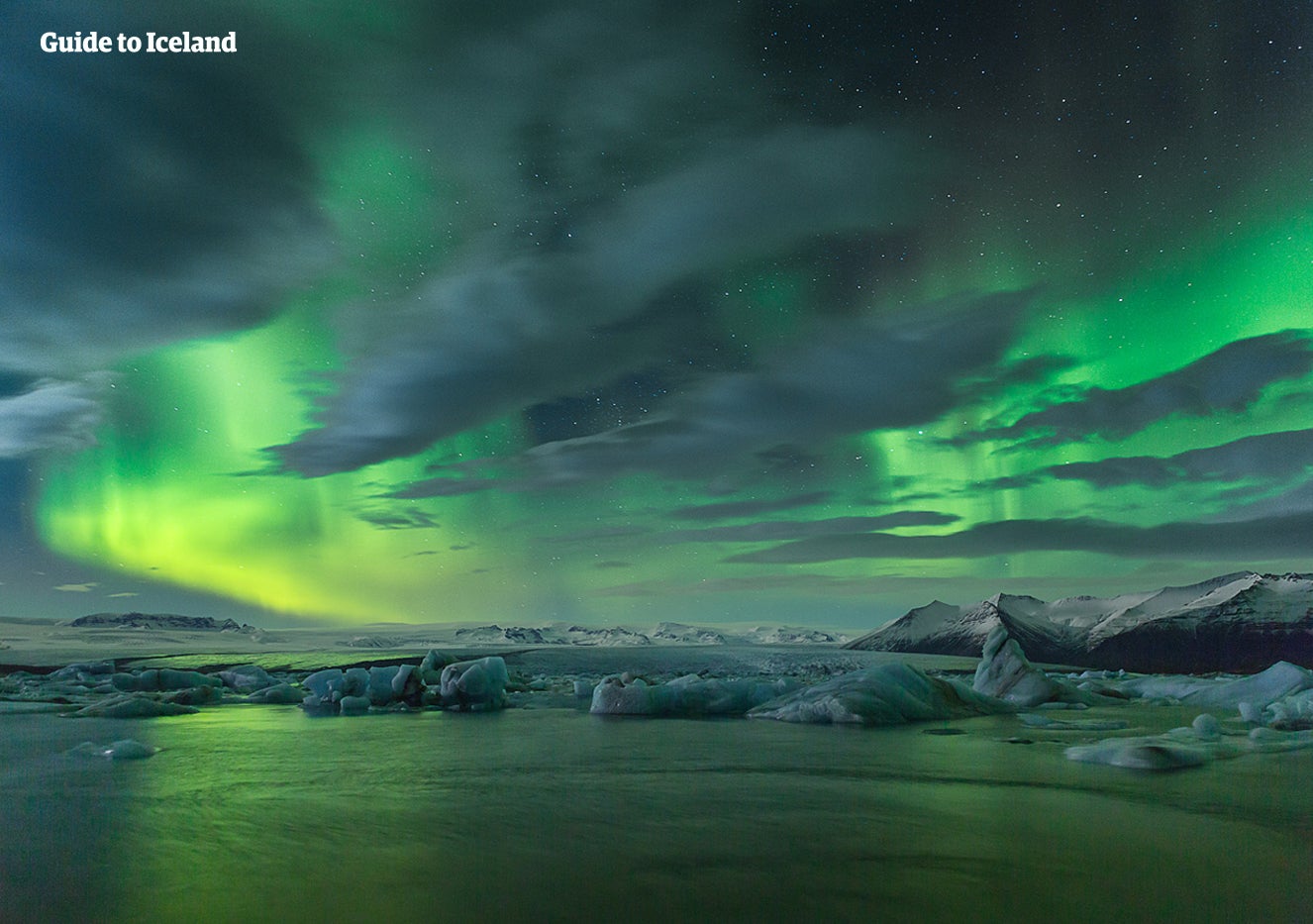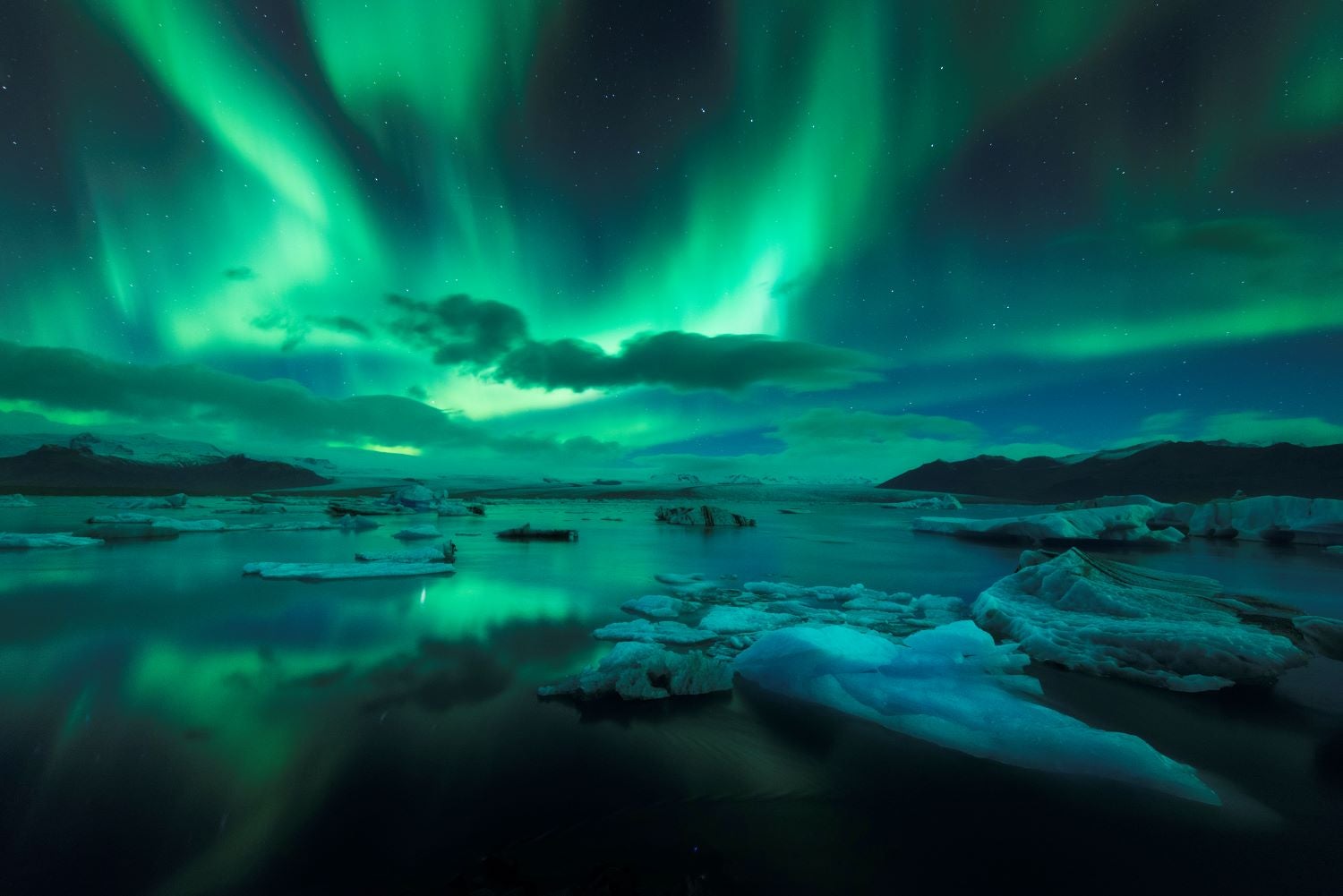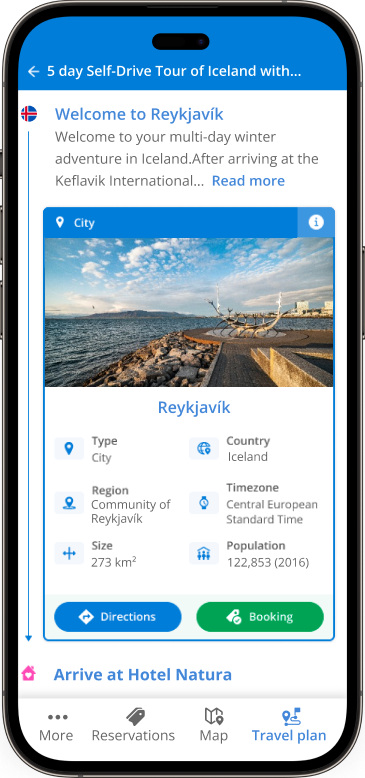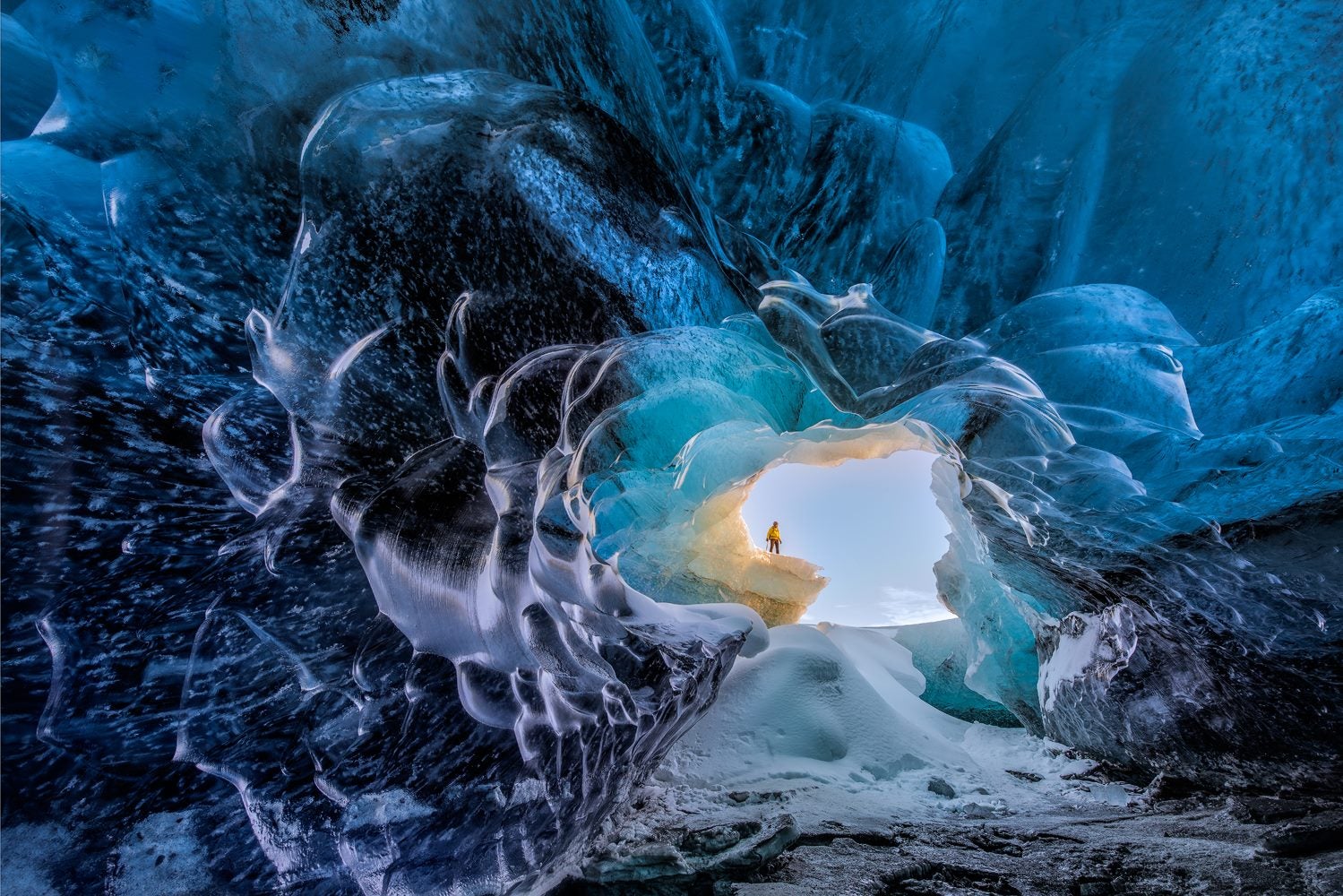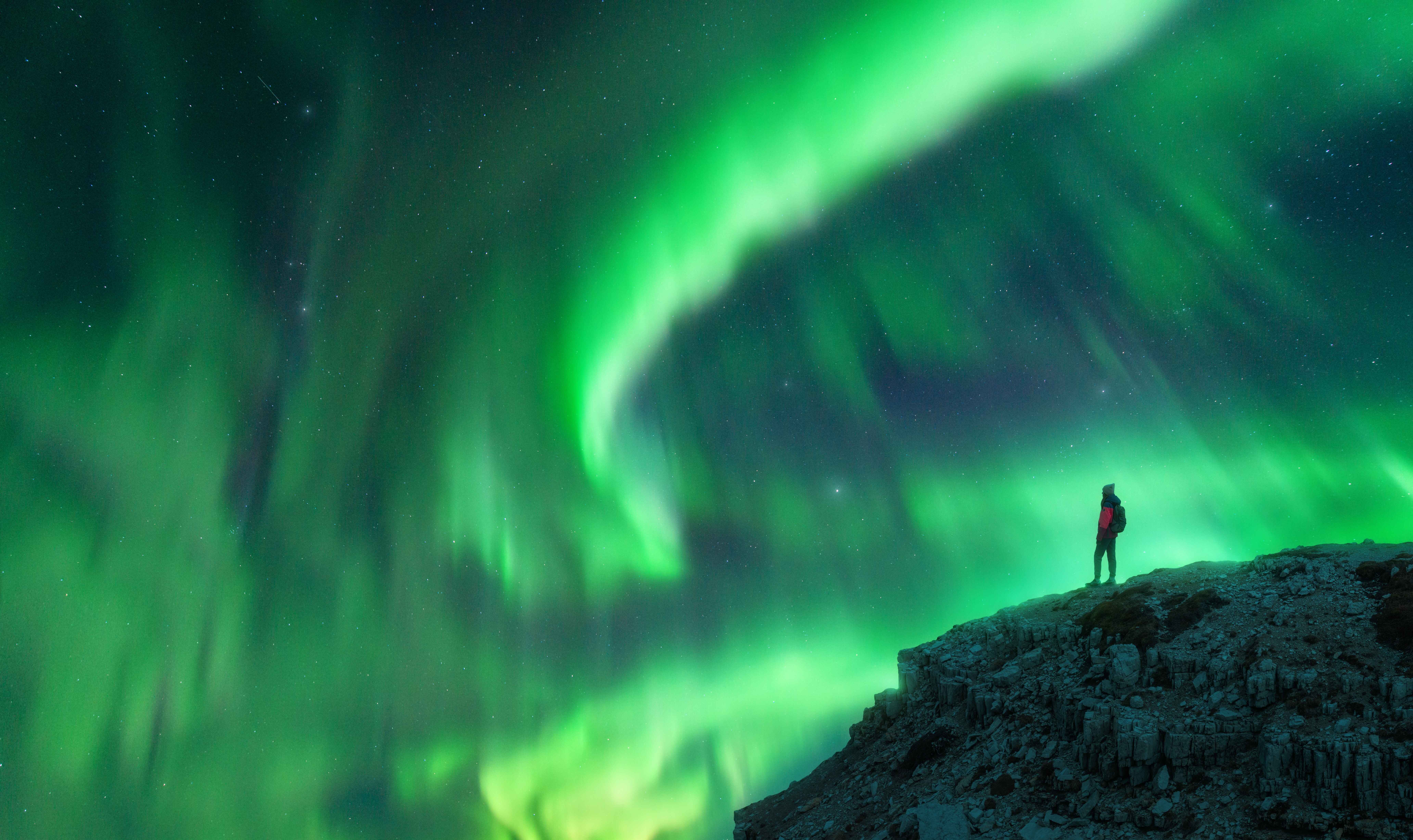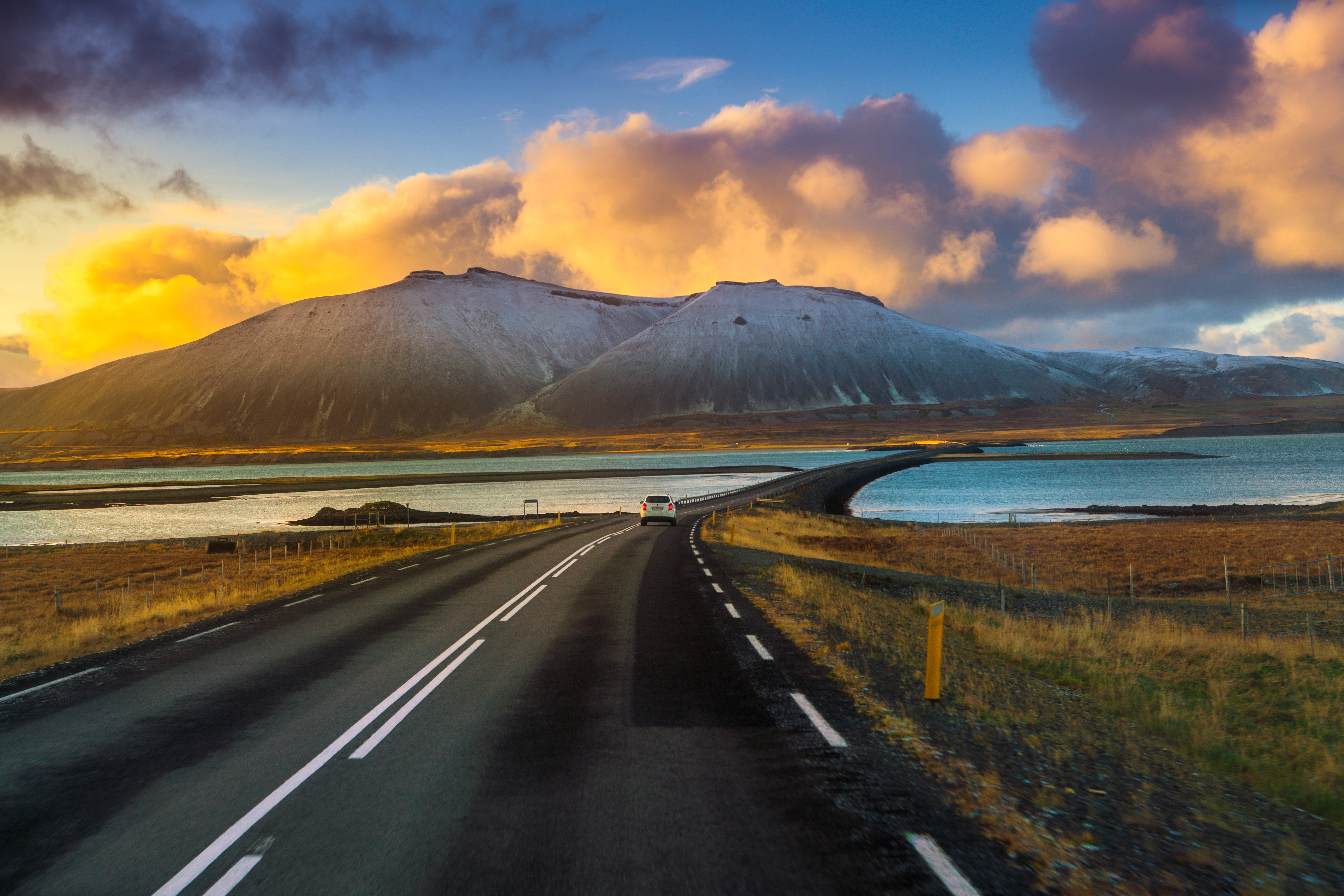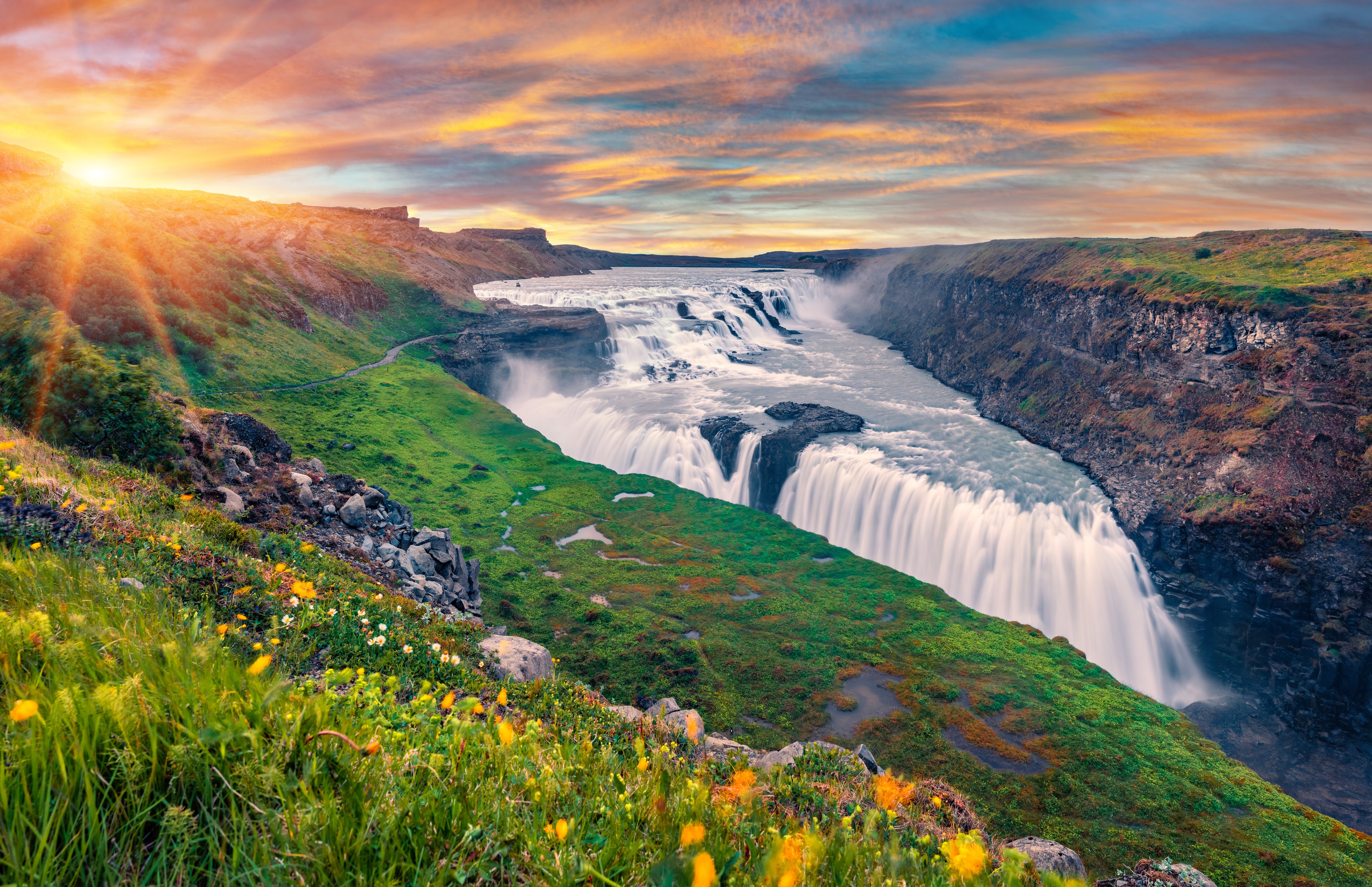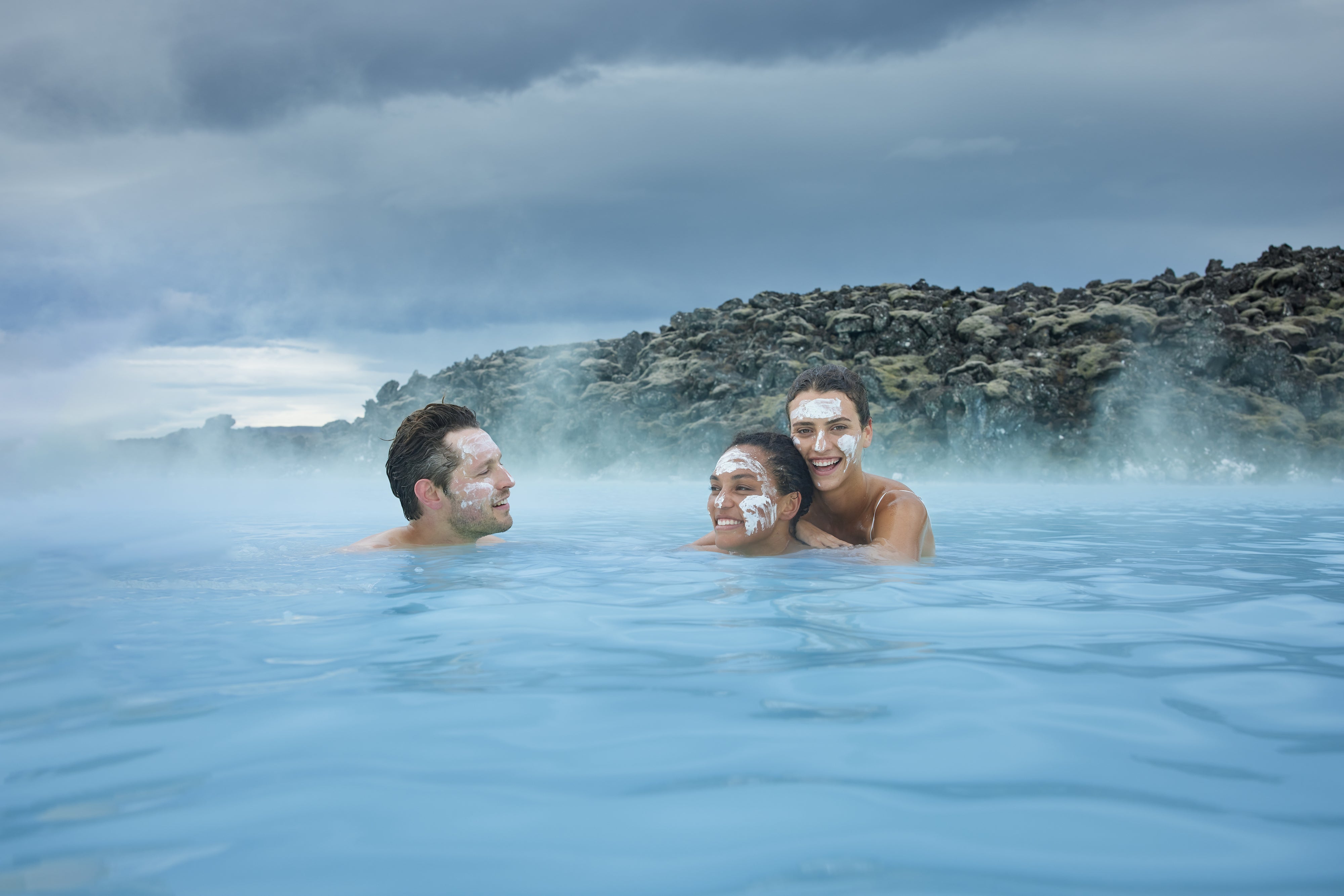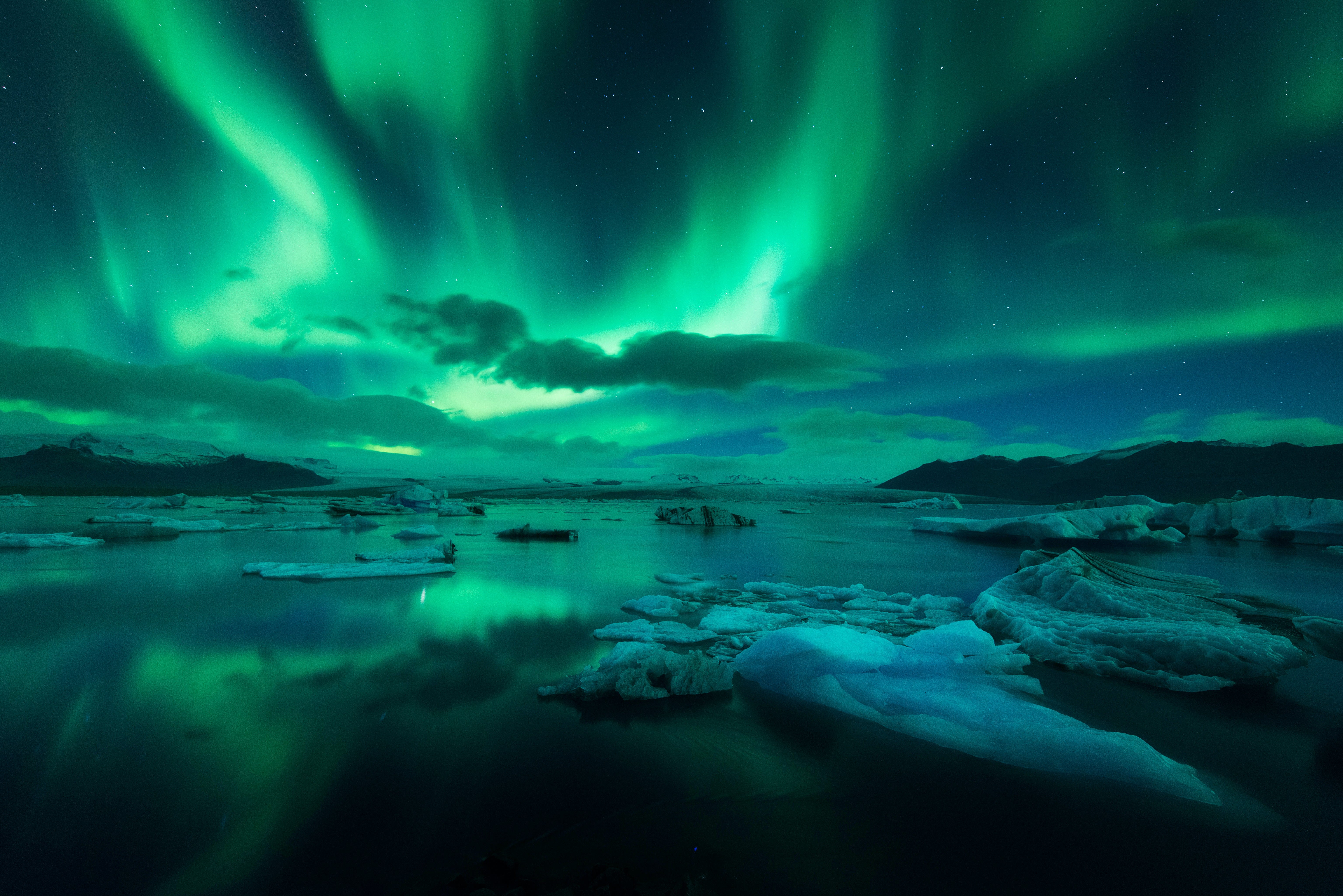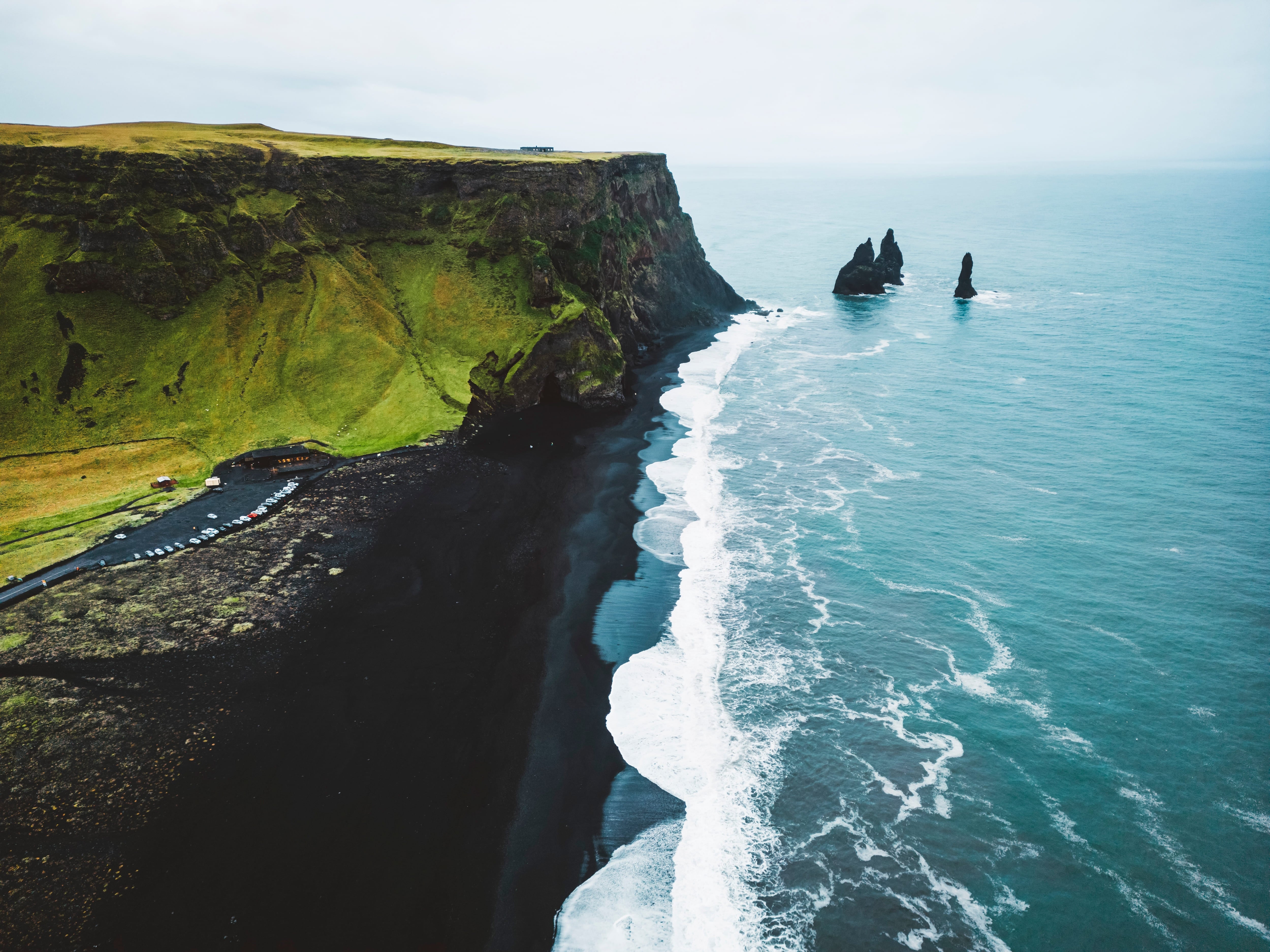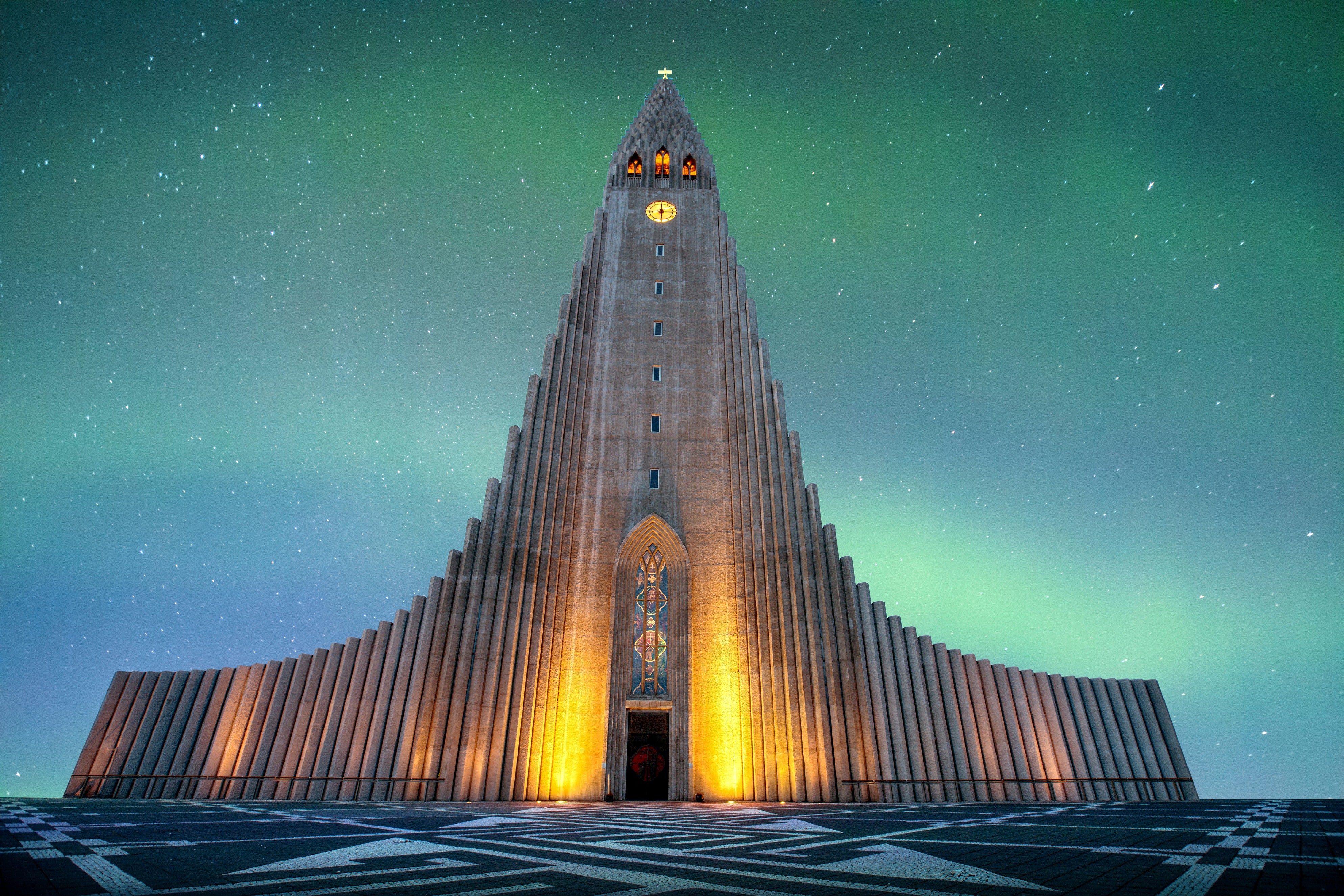Plan your trip during Iceland's northern lights season from late August/September to mid-April for the best chance to see the aurora. Learn all you need to know about the best months and conditions for viewing the aurora borealis in Iceland.
The northern lights, or aurora borealis, are one of nature’s most magical phenomena. Iceland’s high latitude and low population make it an ideal destination for northern lights chasing, but actually seeing them still requires planning and a bit of luck.
Why You Can Trust Our Content
Guide to Iceland is the most trusted travel platform in Iceland, helping millions of visitors each year. All our content is written and reviewed by local experts who are deeply familiar with Iceland. You can count on us for accurate, up-to-date, and trustworthy travel advice.
Long, dark winter nights provide the best conditions, but clear skies and low light pollution are key. Many travelers choose northern lights tours, where experienced guides take you to the best viewing spots. If you prefer flexibility, renting a car lets you hunt for the northern lights independently.
Remember to check the aurora forecast and Icelandic weather forecast for the best viewing opportunities.
There’s no better time to visit Iceland and to cross seeing the northern lights off your bucket list. The sun is at the height of its 11-year solar cycle, with Solar Cycle 25 peaking around 2025 and elevated activity likely to persist into 2026, meaning increased chances of dramatic auroras.
Continue reading to learn when and where to see the aurora in Iceland.
Key Takeaways
-
Iceland’s northern lights season runs from late August/September to mid-April, when nights are dark enough for optimal viewing. The deepest darkness is from November to January; many travelers also love the clearer, often more stable weather windows around late September–October and late February–March.
-
The best places to see the northern lights are away from city lights, with top spots including Thingvellir National Park, the Snaefellsnes Peninsula, and the Jokulsarlon Glacier Lagoon.
-
Checking the aurora forecast and weather conditions is essential. Clear skies and solar activity determine how much you can see; even modest activity can produce beautiful displays on a dark, cloud-free night.
-
Typical peak viewing hours are roughly 9:00 p.m.–2:00 a.m., with a frequent “sweet spot” around 10:30 p.m.–1:00 a.m. Joining a guided northern lights tour or booking self-drive tours increases your chances.
Why 2025 and 2026 are Perfect for Chasing the Northern Lights in Iceland
If you’re planning a trip to Iceland, 2025 and 2026 are especially rewarding years to see the northern lights. The sun is currently at the height of its 11-year solar cycle (the solar maximum), a phase marked by stronger solar activity that produces brighter and more frequent auroral displays.
Solar Cycle 25 began in December 2019 and is peaking around 2025, with elevated activity expected into 2026. That means excellent viewing conditions for visitors during the 2025–2026 seasons. From 2027 onward, solar activity will gradually decrease as the cycle heads toward its minimum around the early 2030s, so now is a prime window to witness especially vivid auroras.
How To Find the Northern Lights in Iceland
Reykjavik offers occasional sightings, but for the best chances, stay in a northern lights hotel or a cozy cottage away from the city's light pollution.
The infographic above breaks down how to find the northern lights in Iceland, but remember that timing and patience matter just as much as location.
Sometimes, the lights appear suddenly and vanish just as quickly. Other times, they dance across the sky for hours.
The Best Time To See the Northern Lights in Iceland
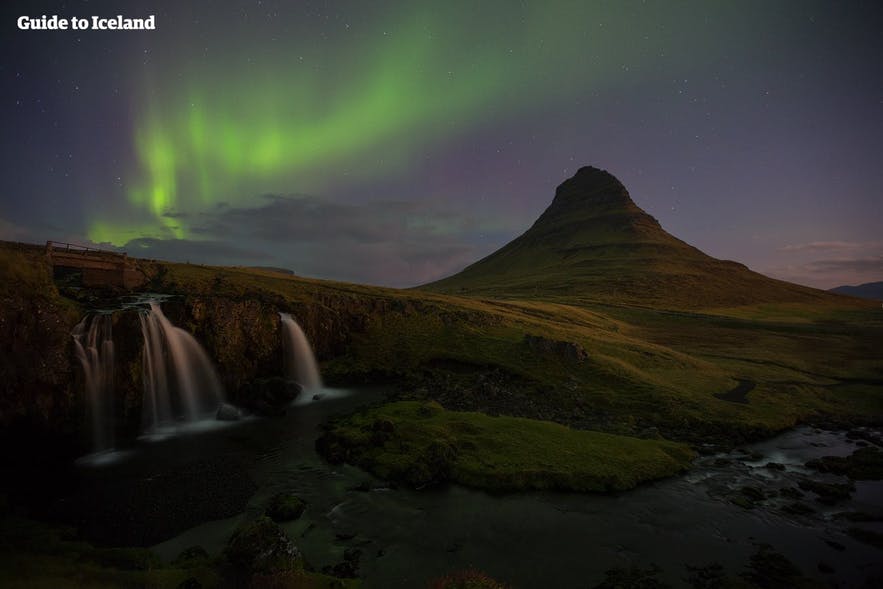
For the northern lights to be visible, you need dark skies and minimal cloud cover. This makes winter the best season to see them, as the long nights provide good conditions.
Iceland’s northern lights season runs from late August/early September through mid-April, when darkness lasts long enough for the aurora to shine. In midwinter, Iceland experiences just 4–5 daylight hours, giving plenty of aurora-hunting opportunities.
Astronomer and science communicator Sævar Helgi Bragason explains that predicting and viewing the northern lights depends on studying space weather data.
He recommends the equinox months (March, April, September, and October) as prime times for experiencing the aurora, with the best visibility typically occurring between 10:30 PM and 1:00 AM. A broader window of about 9:00 PM–2:00 AM is also common in Iceland.
Thanks to Iceland’s location beneath the auroral oval, the area around Earth's poles where auroras are strongest, it remains one of the best places to see the northern lights.
The Best Month To See the Northern Lights in Iceland
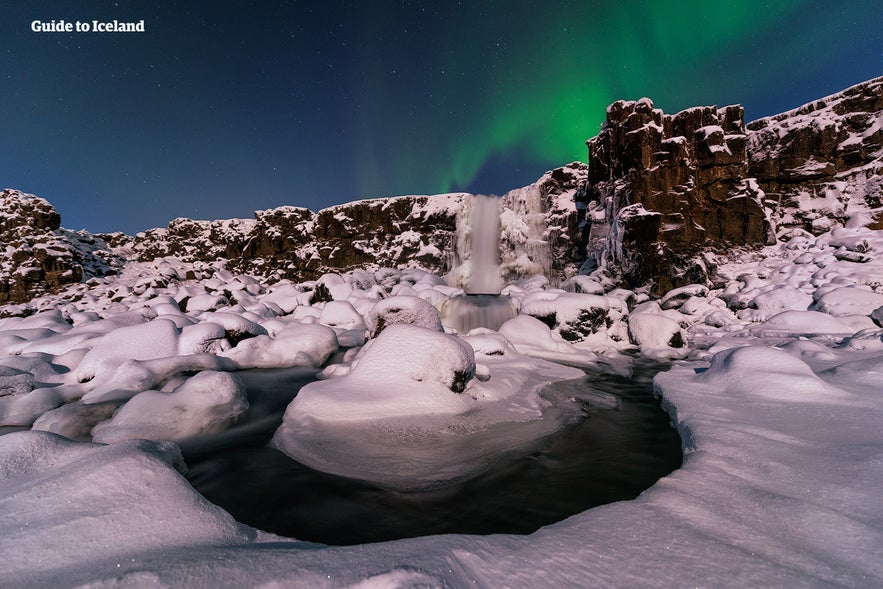
The best time to see the northern lights in Iceland is between September and April. There’s no single “perfect” month, but the longest, darkest nights are from November to January. Many travelers also like late September–October and late February–March for a mix of dark nights and often more stable weather.
Apart from chasing the northern lights, winter is a beautiful time to visit Iceland, as you'll see nature covered by a blanket of snow. Many of the main sites will remain accessible, such as the Golden Circle and the South Coast.
On the darkest midwinter nights, you can hunt for auroras from late afternoon until just before the late-morning sunrise, which in December occurs very late in the morning. These long nights provide great conditions to photograph the northern lights. One of the most unforgettable photo opportunities is capturing the northern lights at Jokulsarlon Glacier Lagoon on the South Coast, where the glowing sky reflects on floating icebergs.
Winter also brings unique activities best experienced in the colder months, like glacier hiking and walking tours. To make the most of your trip, spend the day on adventures like a crystal blue ice cave tour in the Vatnajokull Glacier, then head out at night to search for the northern lights.
- See also the Best Winter Activities in Iceland
- Explore The Best Photo Tours in Iceland
Best Time of Night To See the Aurora Borealis in Iceland
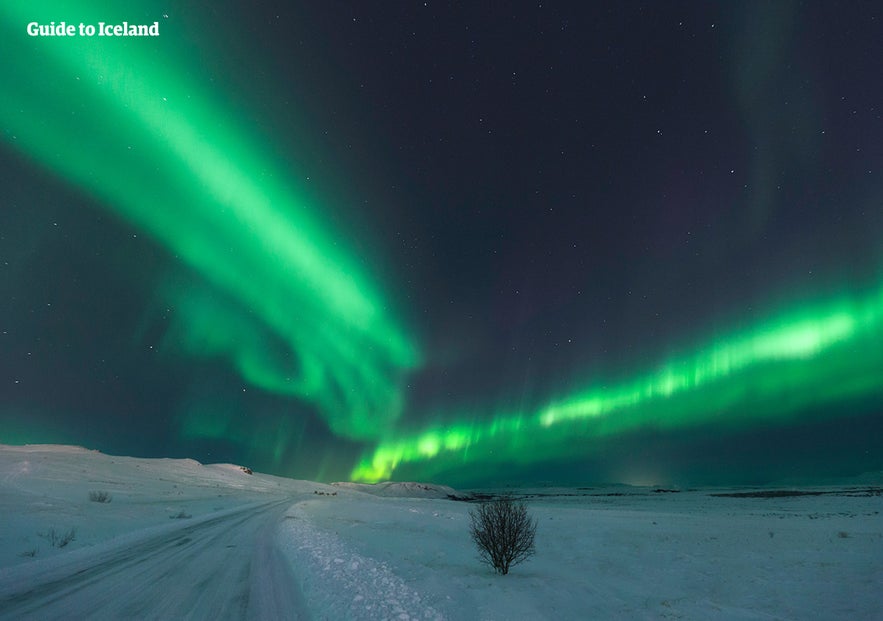
You can see the aurora borealis in Iceland whenever the sky is dark. In December, they may be visible from roughly 4:00 p.m. until just before the late-morning sunrise. While the weather in Iceland in December can be unpredictable, it’s usually not as cold and snowy as in January, so you may have more luck with clear skies.
However, due to Earth’s rotation, atmosphere, and magnetosphere relative to Iceland, auroras most often peak between about 10:30 p.m. and 1:00 a.m., with good chances from 9:00 p.m. to 2:00 a.m.
This is when most northern lights tours set off. It also means you can search during the optimal time and return home early enough to keep your plans the next day.
If you want to increase your chances even further, keep reading below for guidance on the best conditions for aurora sightings and the tools you can use to track them in real time.
If you’re renting a 4x4 car in Iceland and taking winter self-drive tours tailored to the aurora borealis, you can search throughout the night.
However, remember to avoid dawn and dusk when the bright sky significantly dims them. If you are out well into the early hours hunting for auroras, it’ll be noticeably colder, so dress accordingly.
What Are the Best Conditions To See the Northern Lights?
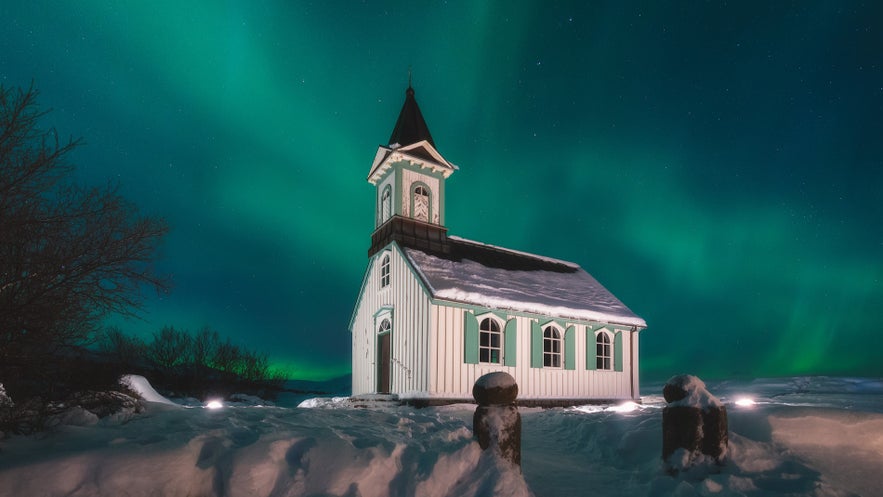
Seeing the northern lights in Iceland depends on four key factors: strong solar activity, clear skies, darkness, and favorable space weather conditions. If you know what to look for, you’ll greatly increase your chances of catching this incredible natural show.
1. Strong Solar Activity
The solar wind is what makes the northern lights appear. The Kp Index forecast measures the level of geomagnetic activity on a 0–9 scale: the higher the Kp value, the stronger the storm and the greater the chance of auroras. Anything around Kp 3 is generally promising—though even Kp 2 can be beautiful on a dark, clear night—so don’t chase high numbers only.
2. Clear Skies (Cloud cover)
Even if solar activity is strong, clouds can block your view completely. The Icelandic Meteorological Office provides a detailed cloud cover forecast to help you find the clearest skies. On these maps, white or light gray areas mean clear skies. Pay close attention to low and mid-level clouds, as they’re the ones most likely to obstruct the aurora.
3. As Little Light as Possible
The darker the surroundings, the better your view. While you can sometimes see the northern lights in Reykjavik, the best displays happen in the countryside, far from artificial lights. If you can, plan around the new moon for the darkest skies.
4. Good Space Weather Metrics
Beyond the basic Kp Index and cloud cover, serious aurora chasers should familiarize themselves with additional space weather metrics. This might sound a bit technical, but with the right tools, you can easily boost your chances of spotting the aurora. Here’s what to keep an eye on:
Negative Bz: The Magnetic Field’s Direction
The Bz value shows whether the interplanetary magnetic field is pointing north (positive Bz) or south (negative Bz). When Bz is negative, energy couples more efficiently into Earth’s magnetosphere, increasing aurora potential.
High Solar Wind Speed
Solar wind plays a big role in auroral activity. Speeds of about 500 kilometers per second (310 miles per second) or more often bring more energetic auroras.
High Density of Solar Wind Particles
The denser the solar wind, the more particles are available to interact with Earth’s atmosphere. Densities of 10+ p/cm³ can produce brighter, more colorful auroras.
Strong Bt
Bt measures the overall strength of the solar wind’s magnetic field. Higher numbers mean stronger magnetic coupling with Earth. Values above about 10 nT greatly increase the likelihood of auroral displays.
Since all these factors change quickly, there’s no single “perfect” answer for when you’ll see the northern lights in Iceland. Success depends on the season, the weather, and real-time solar conditions.
Pro Tip: Monitor real-time aurora data through observatories such as the Leirvogur Magnetic Observatory in Iceland. Their live graphs of geomagnetic activity let you see hour-by-hour changes. Sudden spikes often mean an auroral display is about to begin.
Can You See the Northern Lights in Reykjavik?
Though the urban light pollution usually hampers visibility, you can sometimes see the northern lights from the city center of Reykjavik.
There are also areas within and around the city where the lights are more visible. Look for parks and coastal areas, like the Grotta Nature Reserve or the Sun Voyager Sculpture, as they’re some of the best places to see the northern lights in Reykjavik.
For some unique northern light experiences while in Reykjavik, you can take this dedicated northern lights tour with an optional visit to the Aurora Reykjavik Museum. Or check out the award-winning northern lights show as part of admission to the Perlan Museum observatory.
Best Places To See the Northern Lights in Iceland
Iceland’s best northern lights spots are far from city lights. Thingvellir National Park, just 28 miles (45 kilometers) from Reykjavik, offers dark skies and easy access.
The Snaefellsnes Peninsula is another great choice, with dramatic coastlines and minimal light pollution.
Along the South Coast, the nature surrounding the village of Vik and the Jokulsarlon Glacier Lagoon provide stunning backdrops for aurora displays. In the north, Myvatn Lake boasts clear skies and Earth Lagoon to warm you while you wait.
For the most remote viewing, the Westfjords offer untouched landscapes and some of Iceland’s darkest skies. The Icelandic Highlands can be spectacular in early autumn or spring, but accessibility depends on road conditions.
- Learn more about Driving in Iceland: The Ultimate Guide to Road Trips
Tips for Seeing the Northern Lights in Iceland
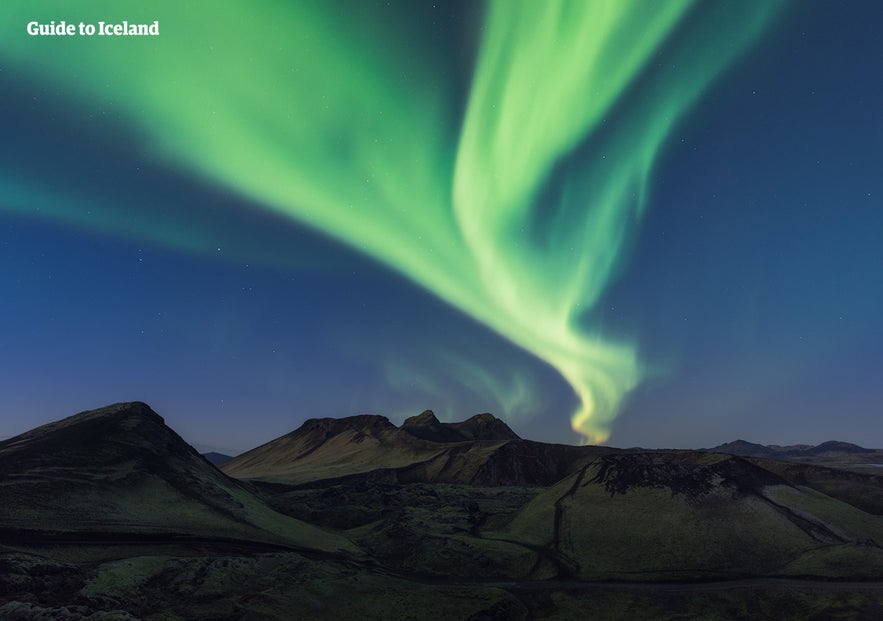
Witnessing the northern lights in Iceland always requires some luck. Some travelers dead set on aurora hunting may encounter cloud cover or a lack of solar activity every night of their holiday. Others, traveling for one night to Iceland in August, might be blessed with a fantastic show without even looking.
Other than waiting for a clear winter’s night, there are several ways to optimize your chances of enjoying a fantastic display of the aurora borealis in Iceland.
1. Take a Northern Lights Tour
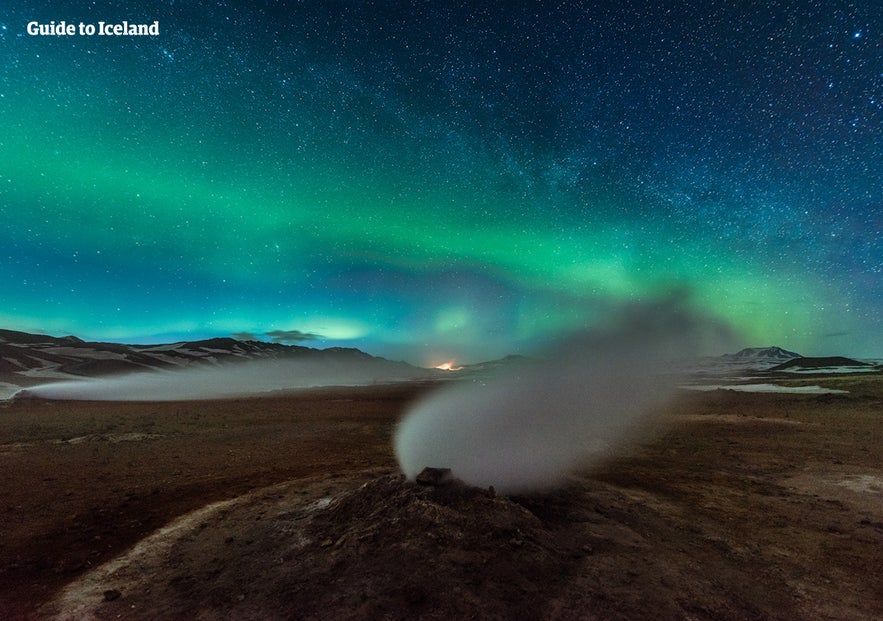
Joining day tours in Iceland is a great way to increase your chances of seeing the northern lights while experiencing Iceland’s stunning landscapes. Expert guides track aurora activity and take you to the best viewing locations, ensuring you don’t miss a thing.
Some of the most popular include:
-
Northern Lights Tour From Reykjavik: A full-circle guided winter tour of Iceland featuring glacier hiking, waterfalls, ice caves, and the northern lights.
-
Northern Lights Boat Cruise From Reykjavik: A guided evening tour that takes you beyond the city lights to prime viewing locations.
-
Northern Lights Super Jeep Tour From Reykjavik: A thrilling off-road adventure in a custom 4x4, bringing you to remote viewing spots.
If you prefer more flexibility, self-drive tours allow you to explore at your own pace while chasing the aurora on your schedule.
Some of the top self-drive tours include:
-
7-Day Northern Lights Self-Drive Tour: A whole week of winter exploration, including top sights and activities.
-
6-Day Northern Lights Self-Drive With Ice Caving: Experience Iceland’s winter wonders, including ice caves, glaciers, waterfalls, and the magical northern lights.
-
5-Day Northern Lights South Coast Tour: Blend aurora chasing with visits to glaciers and waterfalls.
Explore guided multi-day tours for longer travel experiences!
2. Avoid Urban Areas When Northern Lights Hunting
All lights have the same dimming effect on the auroras as the sun. If you’re in Reykjavik and want to see the northern lights, move away from the light pollution.
You can take a city bus to the Grotta Nature Reserve, which is fairly dark compared to the rest of the city. However, you are more likely to achieve better results by booking a tour or driving out into the dark surrounding landscapes.
3. Extend the Length of Your Holiday
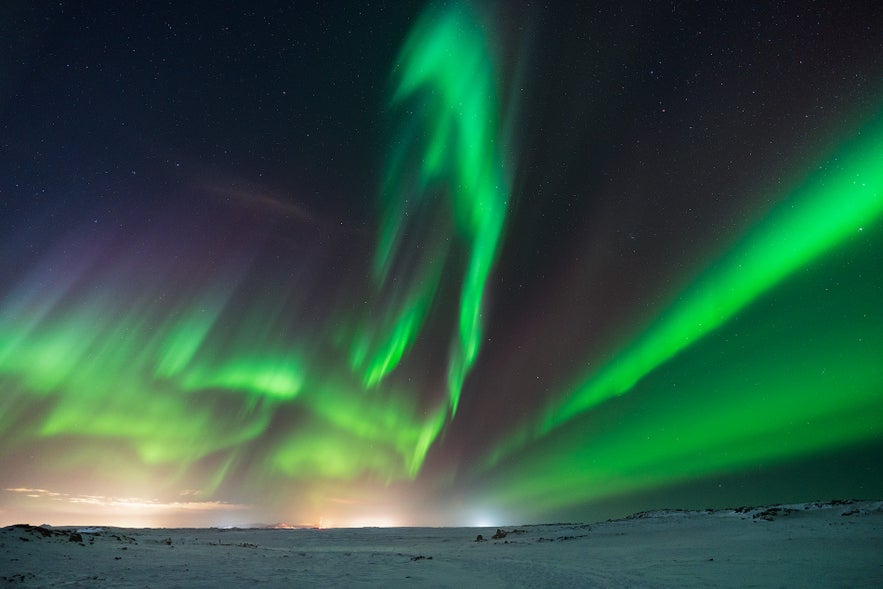 If traveling to Iceland for just a weekend, you only have two or three nights in which to go aurora hunting. Considering the unpredictable weather and fickle nature of the aurora borealis, you’re not setting yourself up for success.
If traveling to Iceland for just a weekend, you only have two or three nights in which to go aurora hunting. Considering the unpredictable weather and fickle nature of the aurora borealis, you’re not setting yourself up for success.
You’re statistically more likely to see the northern lights by staying in Iceland for an extended time.
- See also How Many Days To Spend in Iceland
4. Travel Across Iceland
A longer tour, like this two-week northern lights package, can increase your chances of a lucky night in perfect conditions.
Travelers could also consider spending most or all of their holiday in North Iceland. The nights here are a bit longer in midwinter, providing increased opportunity, and it’s generally less busy than the Reykjavik area.
During the northern lights season, the north is also less busy than the Reykjavik area, allowing you to avoid the crowds at the most scenic viewing spots, such as the marvelous Myvatn Lake or the frozen Godafoss Waterfall.
5. Check the Weather Forecast for Northern Lights
Iceland’s weather website has regularly updated pages revealing the predicted and current cloud cover around the country, allowing you to plan to reach the areas with the clearest skies. The Kp index (0–9) is a helpful global measure of geomagnetic activity—values of 3+ are promising—but local cloud cover and darkness matter just as much, and even Kp 2 can look fantastic under clear, dark skies.
6. Be Well-Prepared and Patient
It'll take several minutes for your eyes to adjust to the darkness of Iceland's winter nights, so stay a while at each spot, even if the sky appears clear. The northern lights can also begin at any moment, so don't rush away if they aren't immediately active.
Make sure you have many layers of warm clothes so you can comfortably wait for the auroras for as long as you need. A bit of patience can lead to the most incredible rewards, which you will remember forever.
FAQs About Iceland’s Northern Lights Season
Here are answers to some of the most common questions about seeing the northern lights in Iceland, from the best times to go to how to check the aurora forecast.
How far in advance should I check the aurora forecast?
Aurora forecasts update daily, and solar activity can be predicted up to three days in advance. However, weather conditions can change quickly in Iceland, so it’s best to check both the aurora and weather forecasts on the day you plan to go aurora hunting.
For those scheduling an aurora trip weeks ahead, the SpaceWeatherLive 27‑day outlook (based on NOAA data) tracks recurring solar patterns. Although less precise than short-term forecasts, it can still highlight windows of increased solar activity worth watching.
Can I see the northern lights in Iceland during autumn and spring?
Yes, it’s possible to see the northern lights in Iceland during late autumn and early spring. Because daylight hours are longer than in midwinter, your window is shorter—but conditions can be pleasantly mild and sometimes less cloudy.
Can I see the northern lights in summer?
No, the midnight sun makes it nearly impossible to see the northern lights in Iceland from late May through early August, as the sky never gets dark enough.
At the very end of summer, there’s a slim chance of spotting faint auroras during the brief hours of darkness in late August, but sightings are rare and require strong activity. For the best chances, plan your trip from September to April.
Experience the Northern Lights and Iceland’s Winter Landscapes
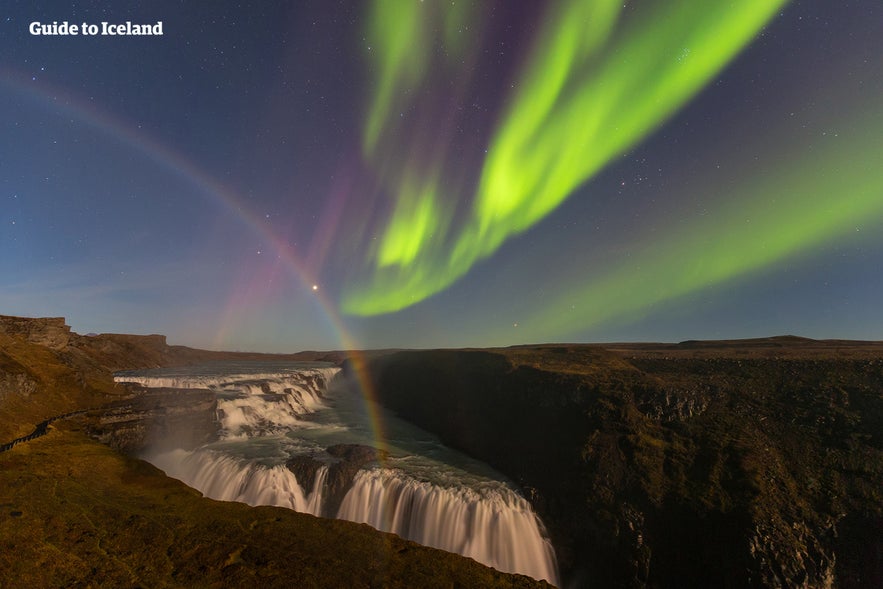
Chasing the northern lights in Iceland is an experience you’ll never forget. The magic of seeing the sky glow with shifting colors is reason enough to plan a visit, especially during the long winter nights when the aurora is at its best.
At the same time, your journey doesn’t end once the lights fade. By day, you can explore Iceland’s otherworldly landscapes on a Golden Circle tour, where geysers, waterfalls, and Thingvellir National Park bring nature and history together.
For relaxation, you can book a Blue Lagoon ticket and experience the warm, mineral-rich waters that provide the perfect contrast to chilly nights spent outdoors.
And if adventure calls, guided tours into ice caves let you step into a dazzling world of crystal-blue formations beneath Iceland’s glaciers.
Iceland gives you the best of both worlds: magical northern lights by night and unforgettable experiences by day.
Do you have any other questions about hunting the northern lights in Iceland? What time of year are you planning to visit? Are you considering a self-drive trip or taking a northern lights tour? Tell us in the comments below!

